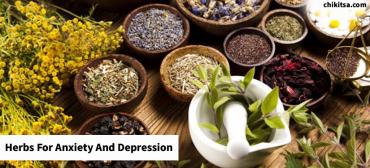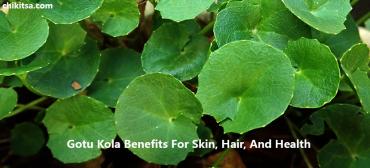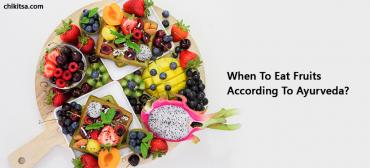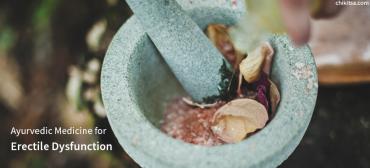Ayurvedic Pharmacology Or Dravya-Guna

The science of Indian medicine dealing with the identification, description, classification of drugs, the preparations, and administration of drugs is known as 'DravyaGuna'.
Extensive literature on this subject both in Sanskrit and in regional languages is available.With reference to medicine, among the categories of Padarthas, substance is the most important, because the other categories are dependent upon it. The substances (Dravyas) are known by the properties they possess (Guna) and the action they cause in the organism (Karma), hence this science of 'Dravya-Guna'inquires into the nature of substances and the medical value they have in order to preserve the health of the individual as well as to cure the diseases. Therefore both articles of food (Aahar) and drugs (Aushadh) are included under the heading of "Dravya"
Definition Of DRAVYA
Though Dravya generally means substance, in Ayurveda it is specifically used in the sense of drug, a substance employed as medicine. Dravya is defined as the substance in which quality (Guna) and action (Karma) resides, and which has an inseparable relationship with the action. There is an inherent, inseparable, and perpetual relationship between substances and qualities. There can be no substance which do not possesses any quality and no action can exist without substance (Dravya).
The pre-eminence of the substance is brought out by Charak-Samhita, mentioning that there can be no maturation (Vipaka) without potency, no potency without taste (Rasa) and there can be no taste without substance (Dravya)
Drugs as substances share the characteristic of being constituted by five primary forms of matter - earth, water, fire, air, and ether, with the human-body-mind complex.
Classification Of DRUGS
1. Drugs Can Be Classified in Various Ways as Follows-
The nine primary substances (the five forms of matter, soul, mind, time, and space) are described as causal (Karan), while the entire world of objects is described as effect (Karya).
2. Dravyas are Also Classified into Living (Chetan) Things and Non-
living things (Achetan). The presence of consciousness is what explains the capability of sensations among the living beings. In the case of non-living matter, consciousness being absent, sensations are not seen.
Living beings are further classified into beings in which consciousness is only latent - such as plants and trees, and beings in which consciousness is both latent and explicit. The former group is also called Sthavar group and the latter group is called Jangama.
3. Based on the Origin of Substances, Dravyas are Classified as -
A) Those Derived From Plants and Trees - Which include Roots, Bark, Sap, Gum, Secretions, Leaves, etc.
They are again divided into four major groups.
a) Plants and trees which have fruits but no visible flowers (Vanaspati)
b) Perennial trees with fruits as well as flowers (Vanaspatya)
c) Creepers and climbers which grow on the support of a tree or which spread on the ground. (Virudh)
d) Plants - the lives of which are over as soon as they yield fruits (Oshadhi)
B) Substances Derived from Mobile Living Beings - Which include Milk, Butter Honey, Skin, Urine, Horns, Hoofs, Nails, Hair etc.
They are again divided into four major groups
a) Which are derived from wombs - like mammals and human.
b) Which are born of eggs - like reptiles and birds
c) Which are born of sweat and slime - like worms and insects
d) Which are born from the earth - like frogs and fire flies
C) Substances Obtained Directly from Earth, Like Metals, Minerals, Salts, Sand and Precious Stones.
4. Substances are Also Classified into Food (Aahar) and Drugs (Used as Medicines)
- Articles of food value are taste dominated and are meant primarily to sustain and nourish the body constituents, where as drugs are dominated by potency (Veerya- pradhana) and are meant to either maintain health or cure diseases.
5. Substances are Again Classified According to Their Effects
a) substances which help in eliminating or reducing the malefic influences of the three Doshas are called Dosha-Prashamanas.
b) substances which bring about disorder in the normal function of seven body constituents are called as Dhatu-Pradushanas.
c) substances which help in maintaining normalcy (Swastha-hita)
6. Substances are Classified into Eight Groups as Heavy, Light, Cold, Hot, Coarse, Soft, Intense and Unctuous or Two Groups (Cold and Hot) in Terms of Drug Potency.
7. Substances are again divided on the basis of pharmacological action. CharakSamhita provides a list of seventy groups whereas SushrutSamhita provides thirty seven groups of substances with their characteristic effects on the organism.
8. Substances are Classified According to the Kind of Place They are Grown in.
a) 'Aquatic' or humid (Aanoop) - where water is abundant, trees grow thick and dense, wind blow with vigour and speed and sunlight is scarce.
b) 'Arid' or mountainous (Jaangal), where water is scarce, sunlight fierce, vegetation meagre and strong wind.
c) 'Medium' (Sadharana), where the characteristics of the above two kinds of land are balanced.
9. Substances are again classified according to the pre-dominance of the primary element constituting them - They are as follows
a) ParthivaDravya - Earth element is in a predominant stage.
b) AapyaDravya- Water element is predominant.
c) AgneyaDravya- Fire element is in a predominant stage.
d) VayevyaDravya - Air element is in a predominant stage.
e) AakashiyaDravya - Ether element is in a predominant stage.
COLLECTION, SELECTION AND REJECTION OF DRUGS
To get the desired effect of the drugs, they are to be collected in some particular seasons, from particular soil, etc. The details about this are given below -
The plants that have grown in the proper season, that have grown to their normal stature, that have acquired the fullest measure of their taste, potency and smell, that have not lost their smell, colour, taste, etc. due to time, heat, fire, water, wind or animals are suitable. The plant that has acquired one taste all over and has grown well, with roots firmly fixed in the earth, is suitable, for collection.
The plants grown in the northern direction are said to be specially good. This is because the Himalayas, where precious medicinal herbs abound, are situated in the north or it may be because the moon, who is the Lord of the medicinal herbs, is the guardian divinity of the northern direction.
For the collection of plants, it has been stated that they should be collected in these Nakshatras - Pushya, Mrugshirsha and Ashwini.
The collector of the medicinal plants must be good in his conduct, benevolent in his attitude; he should purify himself, wear white garments, worship the Ashwins, fast and should face north or east while gathering the herbs.
It has been mentioned in CharakSamhita that the parts of the plants have to be collected in specific seasons to give the best effect. Branches and leaves are best gathered during the rainy season or spring; roots in summer or late winter; bark, tuber and latex in autumn; heart wood in early winter; flowers and fruits are to be collected in seasons when they are available. RajNighantu, however gives a slightly different opinion.
One more opinion about the collection of drugs is utilising the Agni -Shomiya theory, saying that the herbs related to the moon, which are predominantly 'cool in potency' are to be gathered in the cool months (viz. Rains, autumn and early winters), while the herbs which are related to fire, are to be gathered in the warm months (late winter, spring and summer).
The Saumya herbs, which are also collected from the Saumya soil are supposed to be predominantly sweet, unctuous and cool in property.
SarangdharSamhita offers a more practical suggestion. When the parts are required to prepare drugs which are emetics and purgatives, they should be collected at the end of spring, while other parts may be gathered afresh in autumn.
When the drugs of animal origin are taken into consideration, the parts of the body used as drugs must belong to fully mature (adult) animals, while the secretions (milk etc.), excreta and urine must be collected after the food is completely digested in the animal.
One more aspect about collection of drugs is according to the way it is used as a medicine i.e. if a drug has to be used as a purgative it has to be collected from the places containing more of Earth and Water elements, because the act of purgation is carried out by these two elements. Same way, for the act of emesis, the drugs are to be collected from the places of Fire and Air elements in predominance, since for the act of emesis, these two elements hold an important role.
PRESERVATION OF DRUGS
For better results of the drugs, they are to be stored in a proper way. There are some instructions in the classical texts regarding the same. They must be stored in rooms that are well ventilated and periodically fumigated; they must be kept in cloth bags or earthern pots which are not affected by the impact of seasonal changes and which are well covered. The place where the drugs are stored must be free from heat, moisture, humidity, smoke, dust, rodents and other pests. It must be equally suitable in all seasons. It is preferable to have the doors of the room, where drugs are stored, to face north or east direction.
REJECTION OF DRUGS
The plants that are attacked by worms, struck with poison, cut with weapons, dried in the fierce sun or excessive wind, injured by fire or water are unsuitable.
PROCESSING OF HERBS
In Ayurvedic medicine, drugs are used in crude as well as in the form of various preparations. The possible bad effects of the drugs could be eliminated by removing the physical and chemical impurities that the crude drugs may contain naturally. The drugs should be processed in such a way that the impurities which are capable of producing toxic effect should be eliminated and the drug should be converted not only into an effective form but also into a form that is easy and agreeable to take.
The Drugs Can be Processed in Various Forms. The Major Ones are the Following:
1. Svarasa (expressed juice) - It is the juice expressed out of the particular part of a plant, or the whole plant and is meant for the patients who are strong and whose digestive system is good. In this form, the residue part, after extracting the juice is discarded.
2. Paste (Kalka) - In this preparation, the active substances in the drug as well as the other parts of the plant are taken into consideration. Therefore this form is regarded as lighter than the expressed juice.
3. Decoction - This is prepared by boiling one part of the selected part of fresh plants with eight or sixteen parts of water, until ¼ of the water remains.
4. Hima - Cold Infusion - Aromatic drugs and drugs which are cold in property are subjected to this form of infusion. In this form, one part of the drug is taken and added to six parts of warm or cold water and kept for an entire night, and then strained through a piece of cloth in the morning.
5. Fanta - Hot Infusion - This is prepared by steeping one part of coarsely powdered or bruised drug in eight parts of hot (boiling) water in a covered vessel for a specified duration and then decanted. The drug is squeezed in hot water, so that the active principles of the drug are dissolved in the water.
6. Fatty preparations like ghee and medicated oils.
7. Fermented preparations like Asavas and Arishtas.
8. Thickened extracts for licking (Lehas and Avalehas)
9. Powders (Churna) containing the whole drugs pounded in the dry state and strained.
10. Plant alkalies obtained by burning the dried herbs (rich in alkaloids) and purified by water treatment (Kshara); (Khanda) prepared by adding sugar to decoctions of drugs and boiled over mild fire to needed consistency.
11. Weak decoctions (Paniya), decoctions in milk (KshiraPaka)
12. Pills (Vati) - drugs in the tablet form
Minerals are also processed to remove their chemical and physical impurities, and to make them digestible in the following manners.
Bhasmas,Kajjali, PottaliRas,ParpatiKalpanaetc.In this way drugs can be used in various forms.
MODES OF ACTION OF HERBS
The major concept of Ayurvedic medicine is that the body as well as the drug are constituted by the five primary elements (earth, water, fire, air and ether ). The doctrine of three Doshas (Vatta, Pitta, Kapha) as the fundamental fabric of psychophysical constitution also presupposes this premise.
The state of equilibrium of Doshas is considered as the state of health and when this state is disturbed, one or more Doshas becoming magnified or attenuated. The main aim of the treatment is to tone down the magnified Dosha or magnify the attenuated Dosha, so as to restore the balance.
When the errant Doshas are brought under control then only the drug that is administered is considered to be appropriate and effective.
As the drug is consumed, initially the 'stomachic fire' (Jatharagini) acts on it, then the constituent fires (Dhathvagni) and the elemental fires (Bhutagni) acts on it., and then the drug gets assimilated into the constituents of the body and into the physical elemental composition of the body.
The action of a particular drug may be through its properties (Guna) or 'taste after digestion' in the body (Rasa), or it may be through the digestive changes in the body (Vipaka) or due to the potency of the drug (Veerya) or again it may be through the 'specific effect' of the drug (Prabhava).
Rasa
The taste which is expressed immediately and clearly or which is expressed, when the drug is in the dried form, is called as Rasa, whereas the taste which is not clearly expressed or if expressed, it is seen in the end, and only in the wet form of the drug, is called as ' Anurasa' (Secondary taste).
It is defined as the object of the gustatory organ, viz the tongue, as a quality that is perceived by its contact with mucous membrane of the mouth.
'Water' is said to the main generative source (yoni) of taste, while 'Earth' is the auxiliary or cooperative cause, the other three elements enter into this initial combination, and become responsible for numerous tastes.
The relation between a substance and its taste is of reciprocal dependence; the substance is the ground while the taste is a figure there on; they stand in the same relation as body and soul.
The constitutional peculiarity of the substance determines the particular taste that is characteristic of that substance.
There are six tastes that are generally accepted. They are sweet, azcid(sour), saline, pungent, bitter and astringent. Their properties are as given below -
Guna (Physical / Physiological Properties)
It is a category of existence, but is different from substance (Dravya). It is a quality that is inherent in a substance. It also signifies that our attention is forcibly drawn to the substances by the qualities that inhere in them. There is an invariable relationship between substances and their qualities. There can be no substance without qualities and there can be no action without a substance; therefore, qualities are cooperative causes for both substances and actions.
Depending on the physical form of a drug like solid, liquid or gas or its interaction with body tissues, twenty specific characteristics have been described, which also have a capacity to augment or suppress the levels of Doshas. These twenty qualities are arranged in ten pairs of mutually opposite qualities. These are -
1) Guru (Heaviness) X Laghu (lightness) 2) Hima (cold) X Ushna (Heat) 3) Snigdha (Unctuous) X Ruksha (dry) 4) Manda (slow) X Tikshna (Sharp) 5) Sthira (stable) X Sara (mobile) 6) Mruda (soft / tender) X Kathina (hard) 7) Vishada (clear/ pellucid) X picchila (slimy) 8) Slakshna (gentle /smooth) X Khara (rough /coarse) 9) Sukshma (fine /delicate) X Sthula (gross / thick) 10) Sandra (solid / compact) X Drava (fluid).
Veerya (Dynamic Property / Potency)
The active principle which makes the drug act, is known as Veerya. The presence of this principle renders the drug effective, while its absence renders it ineffective. It is distinct from property (Guna), taste (Rasa) and the post-digestive taste- transformation (Vipaka); and it resides in the substance. It is reported that while acting on the body, every drug either proves to be hot (Ushna) i.e. stimulating the over all rate of metabolism, or it is cold (Sheeta), i.e. lowering down the metabolic activities. It is also reported that, in any herb, this potency remains for a fixed duration, hence it must be utilised, when it is fresh, that is within six-twelve months. However, if a drug is subjected to any processing (Samskara) and converted into a formulation, it may remain active for a longer time. A few Ayurvedic scholars believe some other physical characteristics also to be a part of potency, but the discussion on the same is not very important.
Vipaka (Dynamic Alteration / Metabolic Property )
The interaction of digestive enzymes with the chemical structures providing the taste, brings in certain chemical changes because of which the final outcome tends to change. In other words the expression Vipaka is explained as " the completion of the act of digestion", or the end result of the digestive process, which is the combined effect of the three phases of preliminary stage viz., Madhura, Amala and Katu. Ayurveda believes that after interacting with digestive juices, chemical structure of food or drugs with sweet, salty and astringent tastes end up in changing to the sweetish (Madhura) reaction whereas final outcome of pungent and bitter substances would be pungent, Nevertheless, the sour substances remain unchanged even at the end. This is the common law. However, exceptions to these rules also exist.
Prabhava (Specific Property)
The factor which makes a drug specifically effective in some special condition or in some special body system is known as Prabhava. This means a drug having a specific property behaves in quite a different manner as compared to other drugs having similar pharmacological details, viz ;Rasa, Guna, Veerya and Vipaka. The typical constituent which is present in one drug and not in the other is regarded as unexplicable (Achintya), hence the term Prabhava (specific effect). For eg., although the castor oil and sesame oil are similar in appearance, the castor oil is purgative, where as the sesame oil is not. This inexplicability of purgative action is its Prabhava. Nowadays, however, methods are available to analyse a product fully and ascertain the factor responsible for such effect.










